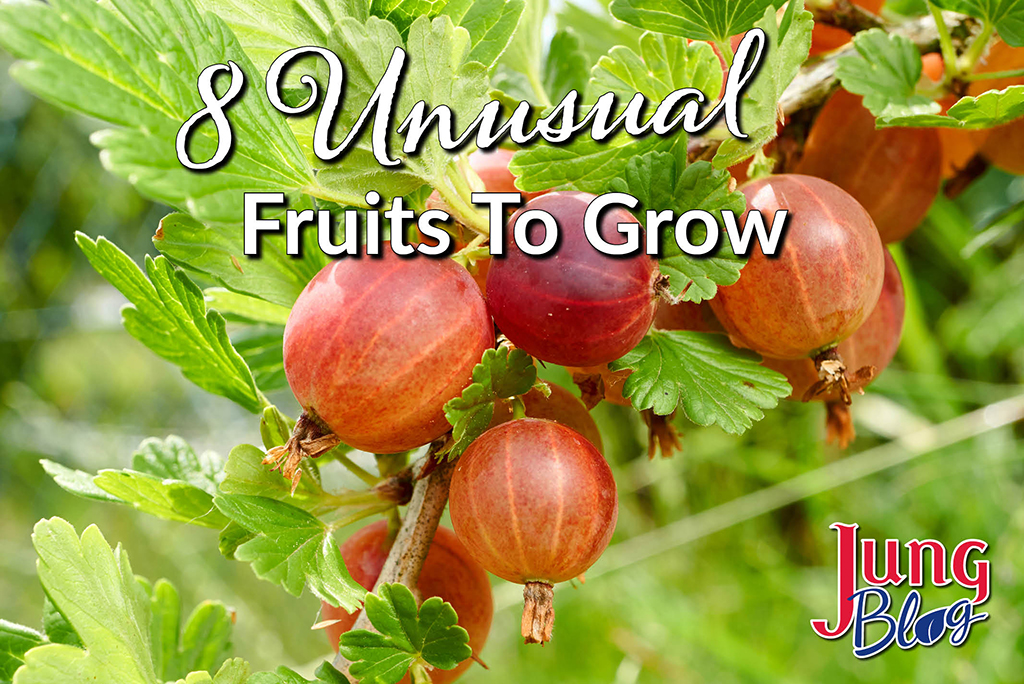
What’s your favorite fruit? This question suggests apples, grapes, oranges for many of us, but how about Goumi or Jostaberry? Jung offers an assortment of popular and lesser-known fruits. While some of these are less common, their unique qualities make them a tasty and low-maintenance addition to the landscape. Let’s dive in!
Currant
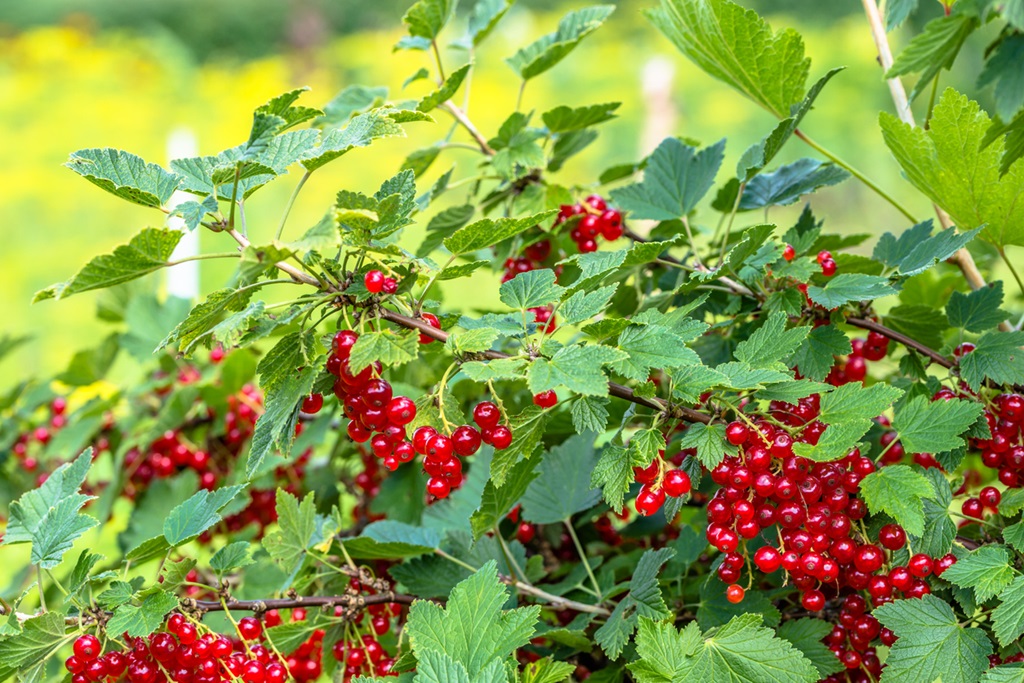
Currants are like gooseberries, with many of the same growing requirements and uses. And while they’re self-fruitful, 3 to 4 plants are ideal for a family. You can grow red, black, or white currants. Still, red is the most popular for gardeners, especially ‘Red Lake.’ Black currants are also common, with their high levels of nutrients that make them a superfood.
Red currants are typically used for fresh eating and baking, while black currants make excellent jams, juices, and wine.
If you don’t have space in a garden, consider using currant in the landscape as a fruiting ornamental. Currants are sometimes the host for a disease called white pine blister, which can harm white pine, so it’s recommended to avoid planting currants in close proximity to white pine. However, red currants are less susceptible to spreading this disease.
Jung Seed Favorite – Pink Champagne Currant
Goji Berry
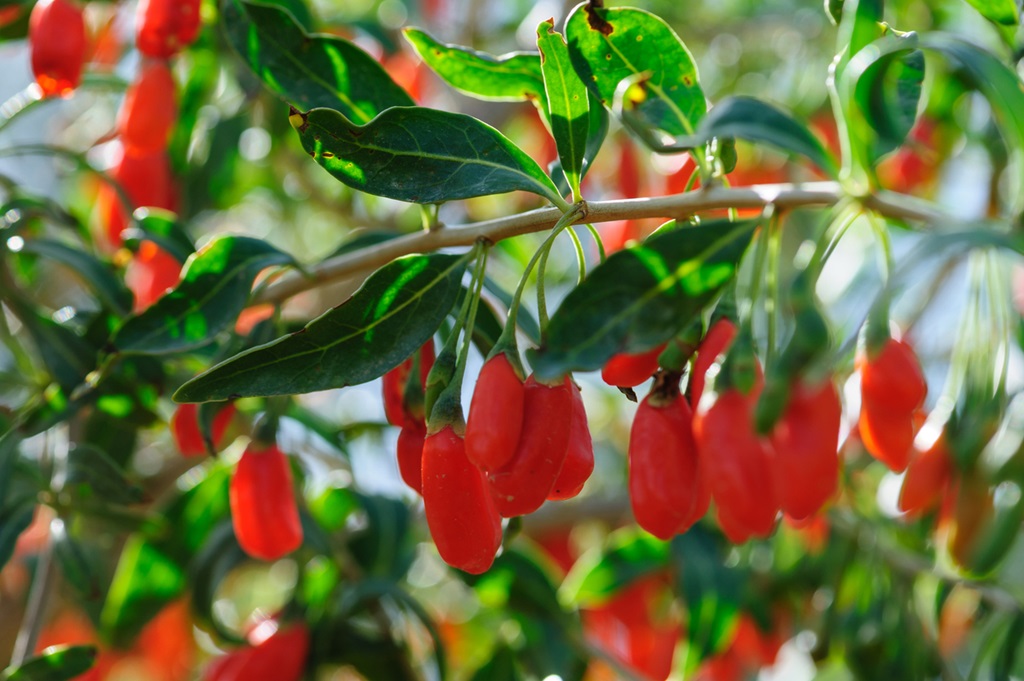
Goji Berry are native to tropical areas of Asia but grow well in zones 5-8. These sweet fruits are known for their versatility in the kitchen and their high levels of nutrients, making them a superfood. In the landscape, these plants grow 6-10 feet tall and are self-fertile, meaning you only need one variety to have fruit. These fruits prefer full sun but will tolerate light shade.
This member of the tomato family produces purple, bell-shaped flowers in late spring, which later become small fruits that turn red. Once established, these vining shrubs are drought-tolerant and disease-resistant, making them a low-maintenance addition to the yard. For eating, you can use them fresh or freeze them for later use, and people often dry them like raisins.
Jung Seed Favorite – Crimson Star™ Goji Berry
Gooseberry
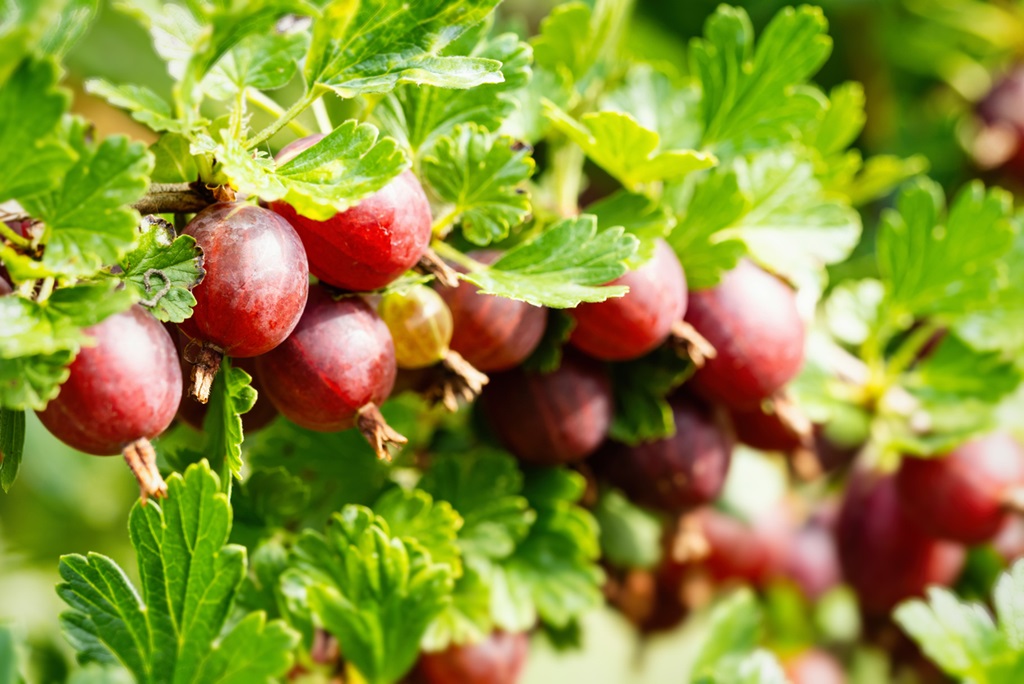
These hardy berries have been around for many centuries, especially in Europe. With many varieties to choose from, these plants are bred to produce sweet fruit with resistance to mildew. Gooseberries are known for their exceptional pies, jams, and jellies.
They’re also good for fresh eating and grow 3-6 feet tall, depending on the variety. With self-fruiting ability and high yields, these shrubs are a good fit in cool, moist areas of the yard. Gooseberry thrives in full sun but will tolerate partial shade.
Jung Seed Favorite – Hinnomaki™ Red Gooseberry
Goumi
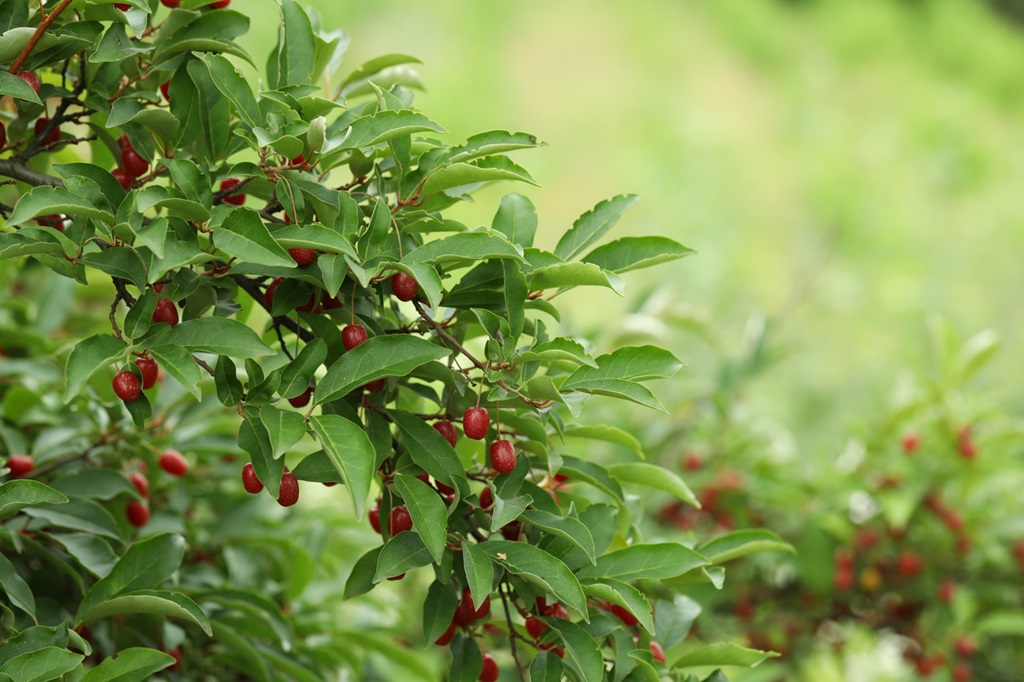
With its unique blend of flavors, goumi is an easy-to-grow fruit with a sweet-tart flavor that resembles cherries, apples, and black currants. In May, this 4-6 feet shrub produces fragrant white blooms that become small red fruit in late June.
After harvest, the fruit is ideal for fresh eating, drying, or making preserves. Goumi is self-fertile and bears fruit about 2-3 years after planting. And going a step further, the shrubs are not bothered by pests or diseases. They grow best with at least ½ a day of full sun.
Jung Seed Favorite – Sweet Scarlet™ Goumi
Honeyberry
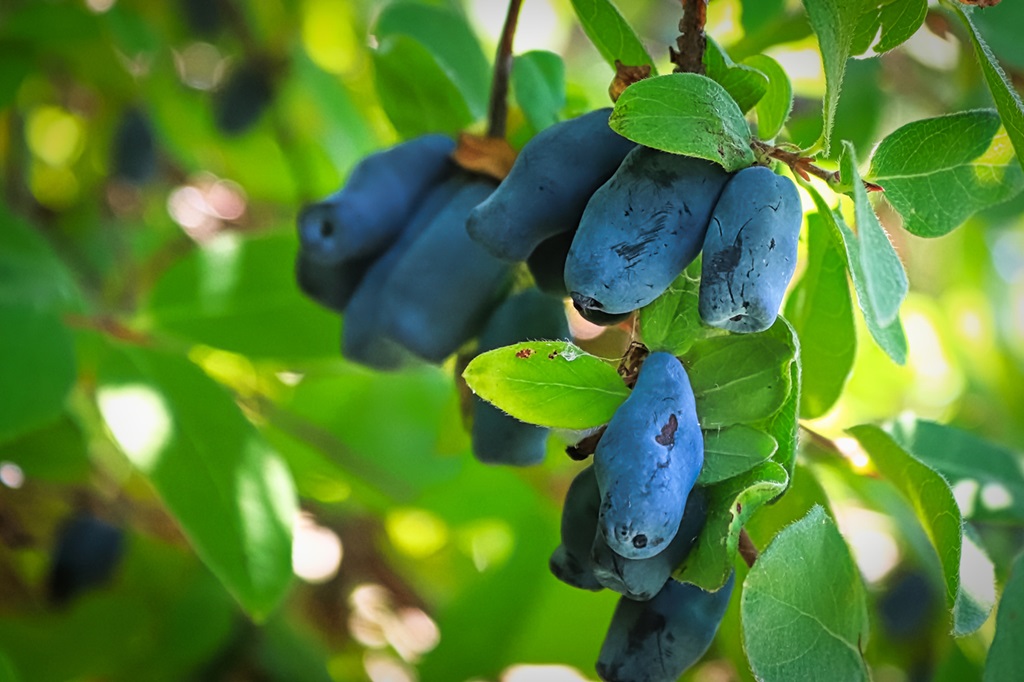
These small, blue berries are new to the U.S. and are one of the hardiest fruits you can grow. They are native to boreal forests of North America and Asia, where they grow on small bushes that are usually 3-6′ tall. With a flavor that is a blend of blueberry and raspberry with a touch of zing, they are perfect for fresh eating or use in processed foods, like jams and pastries.
Honeyberry is relatively easy to grow and tolerates a wide variety of soil pH, with fruit ripening around the same time as strawberries or a bit earlier.
Because the plants flower early in spring (up to 6 weeks before the last frost), the blooms can withstand temperatures of 20°F. For best production, another variety that blooms at the same time should be planted. While the plants begin producing after one or two years, they will have much larger crops in year three or four. Pests and disease are not significant issues, though you might see powdery mildew in midsummer after the harvest. However, this disease won’t affect the long-term health of the shrubs.
Jung Seed Favorite – Boreal Beast Honeyberry
Pawpaw
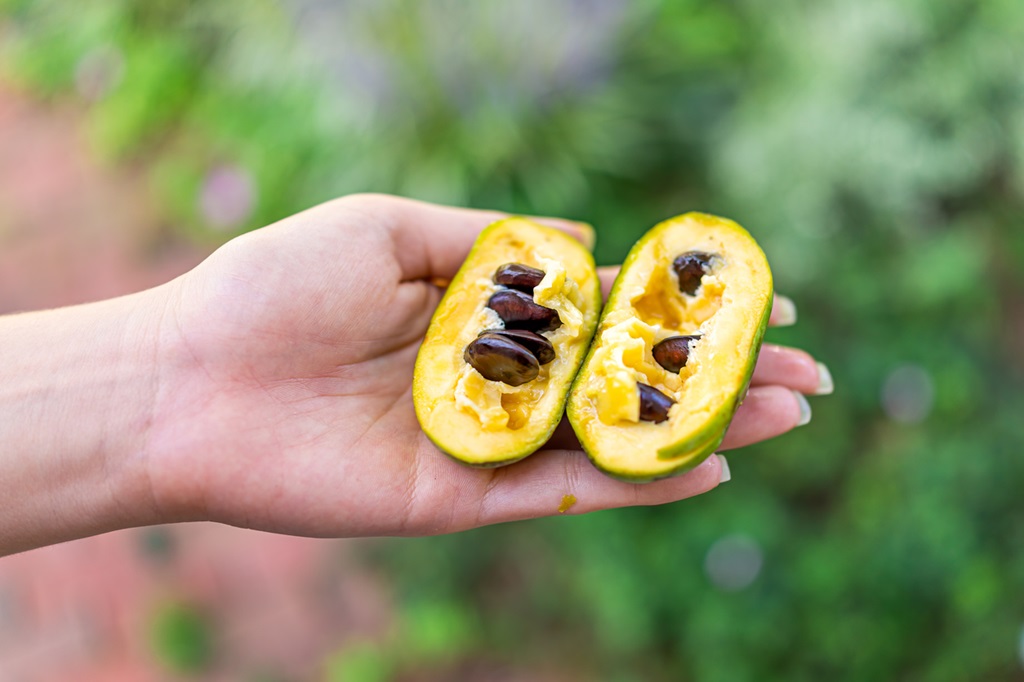
This U.S. native is hard to forget with its tropical-looking leaves and unusual fruit. Pawpaw fruit is often called the “Hoosier Banana” because of its unique shape and texture. Their creamy flavor resembles bananas or vanilla custard, making them a sweet treat. In terms of nutrition, they are high in protein and vitamins A and C.
In the landscape, these are natural understory trees that prefer part shade when young. Pawpaw should be planted in moist, slightly acidic soil, and the fruit should be harvested when it changes from green to yellow. Two trees should be planted for cross-pollination.
Jung Seed Favorite – Shenandoah Pawpaw
Pineberry
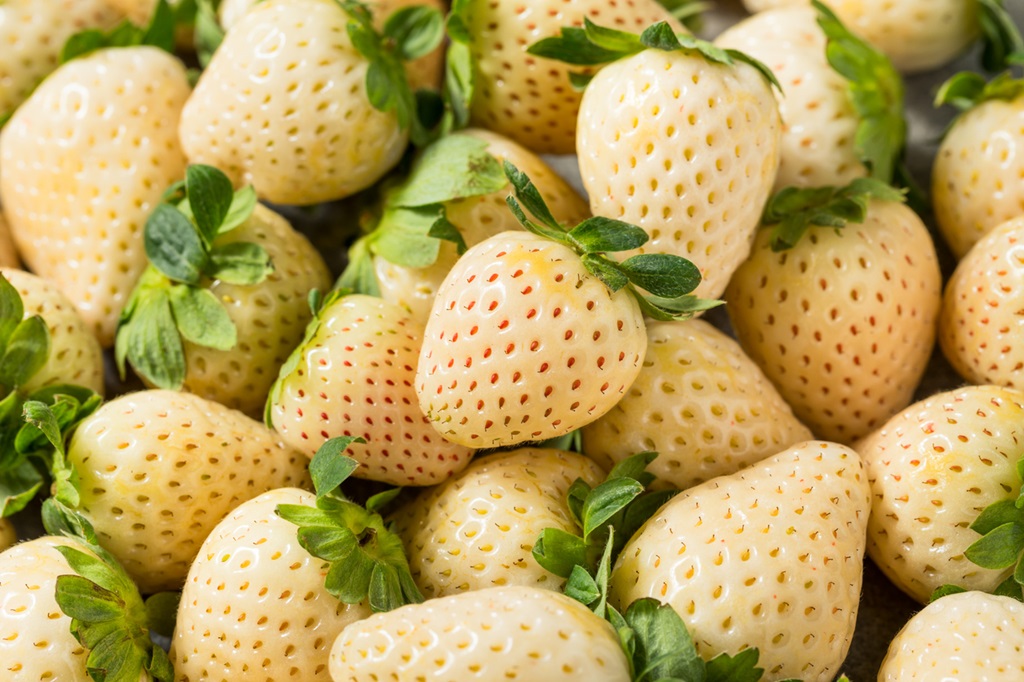
At first glance, this fruit resembles a white strawberry, and that’s because pineberry is a hybrid of a white strawberry. The real highlight of pineberry is the delicious fruit that smells and tastes like pineapple, making this novelty fruit a great choice for the garden.
In the landscape, pineberries are grown like regular strawberries and are self-fruitful. However, you’ll have more fruit with a 2nd variety of strawberries. In the heat, you may notice the fruit turning a blush pink, which won’t affect the flavor. Another key feature of pineberry is the fruit size, which is typically smaller than strawberries. Plants are everbearing and can produce fruit until frost.
Jung Seed Favorite – Pineberry
Sea Berry
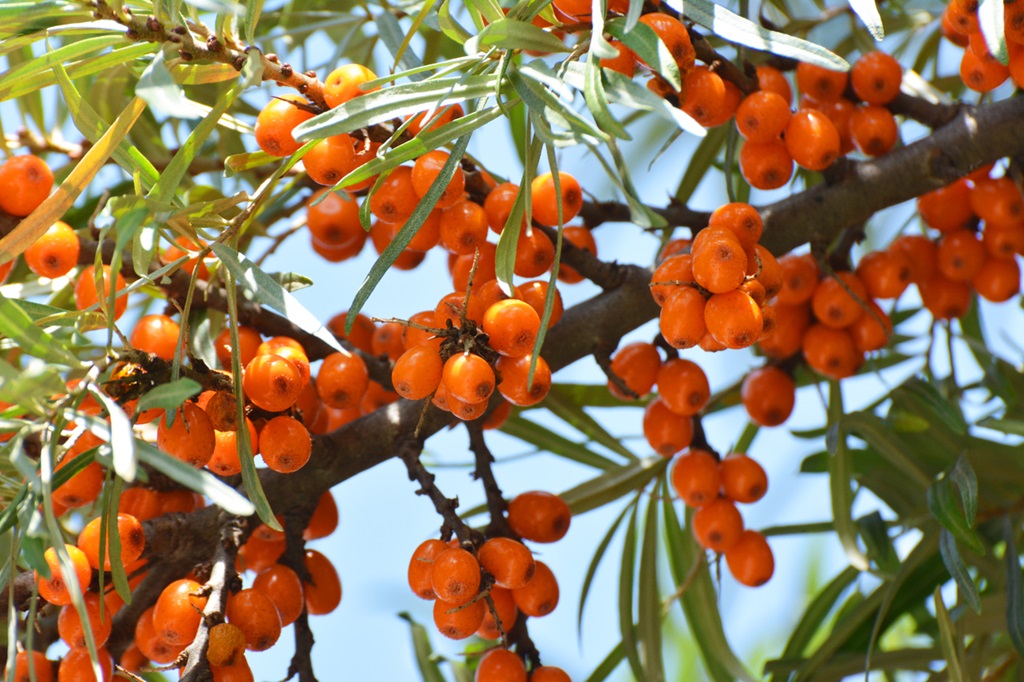
As one of the hardiest fruits in the world, sea berry is known for its clusters of yellow-orange fruit that taste like a blend of oranges and passion fruit. These small fruits ripen in late summer and fall, making them ideal for sauce, jellies, and juice. And the fruit has very high levels of vitamins A, C, and E.
It’s a durable plant for the landscape, as it grows to 6-10′ with exceptional drought, disease, and salt spray tolerance. A male plant is required for pollination, and a single male pollinating 6 to 8 female plants. These shrubs also look good with their attractive, narrow silver-green leaves.
Jung Seed Favorite – Leikora Sea Berry Or Sea Buckthorn

Consider these unique fruits as you’re planning the garden for spring. Perhaps you’ll find a new favorite!
Other Recommended Reading

- 7 Environmental Factors To Consider With Gardening
- Garden Trends: Color of the Year 2024
- 10 Colorful Perennials For Your Spring Garden
- Planning Your 2024 Vegetable Garden
- Creating A Treehouse Garden

At Jung Seed Co, we strive to be your go-to guide for all your gardening needs. Our YouTube channel The Garden Doctor by Dick Zondag is where he provides gardening tips for all levels of gardeners. When you need reliable gardening advice, turn to the trusted experts at Jung.
View our new catalog online or browse our website for your gardening favorites. To receive info on new products, exclusive deals, and specials, be sure to sign up for our weekly email. Join our Facebook page, to discuss all things gardening!
About the Author: Matthew Olson is a professional horticulturist and garden writer. He has a bachelor’s degree in horticulture from UW-River Falls and is a certified professional with the Minnesota Nursery and Landscape Association. His enthusiasm for plants and the outdoors brought him to the green industry. He regularly writes articles about gardening for both gardeners and industry professionals. He can be reached at matt@mattolsonhorticulture.com.